Nerve Conduction Velocity test (NCV)
Table of Contents
What is Nerve conduction velocity (NCV)?
- Nerve conduction velocity (NCV) also called as electroneurography, Energy, or nerve conduction study, a nerve conduction velocity (NCV) test is a measurement of the speed of conduction of an electrical impulse through a nerve.
- Nerve conduction velocity (NCV) can determine nerve damage and destruction.
- During the test, the nerve is stimulated, commonly with surface electrode patches attached to the skin.
- There are two electrodes are placed on the skin over the nerve.
- One electrode stimulates the nerve with a very slight electrical impulse and the other electrode records it.
- The outcoming electrical activity is recorded by another electrode.
- This is repeated for each and every nerve being tested.
- The nerve conduction velocity (NCV) (speed) is then calculated by measuring the distance between electrodes and the time it takes for electrical impulses to travel between electrodes.
- A connected procedure that may be performed is electromyography (EMG).
- Electromyography (EMG) measures the electrical activity in muscles and is often performed at the same time as nerve conduction velocity (NCV).
- Both procedures assist to detect the presence, location, and extent of diseases that damage the nerves and muscles.
- A nerve conduction velocity (NCV) test is used to assess nerve damage and dysfunction.
- Also known as a nerve conduction study, the whole procedure measures how quickly electrical signals move through your peripheral nerves.
- Your peripheral nerves begin where the nerve root gets off from the spinal cord.
- These nerves assist you to control your muscles and experience the senses.
- Healthy nerves convey electrical signals more quickly and with greater strength than damaged nerves.
- The nerve conduction velocity (NCV) test helps your doctor differentiate between an injury to the nerve fiber and an injury to the myelin sheath, the protective covering surrounding the nerve.
- It can also assist your doctor tell the difference between a nerve disorder and a condition where a nerve injury has affected the muscles.
- Making these distinctions is the main for proper diagnosis and determining your course of treatment.
Who gets a Nerve Conduction Velocity (NCV) test?
A nerve conduction velocity (NCV) test can be used to diagnose a number of muscular and neuromuscular disorders, involving:
- Guillain-Barré syndrome
- carpal tunnel syndrome
- cubital tunnel syndrome
- Charcot-Marie-Tooth (CMT) disease
- herniated disc disease
- chronic inflammatory polyneuropathy and neuropathy
- sciatic nerve problems
- peripheral nerve injury
- trauma
- muscle disorders
If your doctor suspects you have a pinched nerve, they may recommend a nerve conduction velocity (NCV) test. Electromyography (EMG) test is often performed alongside a nerve conduction velocity (NCV) test. An electromyography (EMG) test records the electrical signals moving through your muscles. These assists detect the presence, location, and extent of any disease that may damage the nerves and muscles.
How to prepare for a nerve conduction velocity (NCV) test?
- When planning this test, your doctor will ask about conditions, medications, or behaviors you have that might influence the results.
These include:
- alcohol use,
- use of some neurologic medications, such as muscle relaxants, opioids, or psychotropic medications,
- diabetes,
- hypothyroidism,
- systemic diseases.
- It is also an important thing for your doctor to know if you have a pacemaker.
- The electrodes used in the nerve conduction velocity (NCV) test may affect the electronic impulses of your medical device.
- It is recommended that you stop using any lotions or oils on your skin a few days previous the test.
- These creams can cure the electrode from being properly placed on the skin.
- Fasting usually is not necessary, but you may be asked to avoid caffeine beforehand.
What to expect during the test?
The particulars of nerve conduction studies can vary, yet they follow the same general process:
- You will be asked to get off any metal objects, such as jewelry, that could interfere with the procedure.
- You may require to remove some clothing and wear a gown.
- You will sit or lie down in a supine position for the test.
- Your doctor will notice the nerve to be tested.
- Your doctor will place 2 electrodes on your skin, one that stimulates the nerve and another one that records the stimulation.
- They may use a jelly or some kind of paste to assist the electrode stick to the skin.
- The nerve will be stimulated by a mild and short electrical shock from the stimulating electrode.
- One common test, for example, stimulates nerves in the finger & records the stimulus with 2 or more electrodes near the wrist.
- The whole test takes 20 to 30 minutes on one limb.
- If all limbs are tested, then it will be more than one hour.
- The sensation may be uncomfortable, but it typically is not painful.
- Your doctor may want to execute the test in more than one location.
- The test is done along with the path of the nerves on an arm or a leg, depending on the condition being investigated.
- In one study trusted Source, researchers used the nerve conduction velocity (NCV) test to examine damage to the ulnar nerve, which provides sensation to the hands.
- Adding a third stimulation site to the two normally used increased the sensitivity of the test from 80 to 96 percent trusted Source.
- Your primary care doctor and the specialist who conducts the test can tell you when or if the test will require to be done again.
What happens during a nerve conduction velocity (NCV) test?
- A nerve conduction velocity (NCV) procedure may be performed on an outpatient basis or as part of your stay in a hospital. Procedures may differ depending on your condition and your physician’s practices.
- The nerve conduction velocity (NCV) is performed by a neurologist, although a technologist may also perform some portions of the test.
Generally, a nerve conduction velocity (NCV) procedure follows this process:
- You will be asked to take out any clothing, jewelry, hairpins, eyeglasses, hearing aids, or other metal objects that may interfere with the procedure.
- If you are asked to take out clothing, you will be given a gown to wear.
- You will be asked to sit or lie down in supine position for the test.
- A neurologist will find the nerve(s) to be studied.
- A recording electrode will be attached to the skin over the nerve with an important paste and a stimulating electrode will be placed at a known distance away from the recording electrode.
- The nerve will be stimulated by a mild and short electrical shock given through the stimulating electrode.
- You may experience minor discomfort for some seconds.
- The stimulation of the nerve and the detected response will be displayed on an oscilloscope (a monitor that displays electrical activity in the form of waves).
Understanding your results
- One advantage of a nerve conduction velocity (NCV) test is that it is considered an objective measurement and trusted source of the health of a nerve, compared to subjective reports of pain or poor functioning.
- A nerve conduction velocity (NCV) between 50 and 60 meters per second is commonly considered to be in the normal range.
- However, any outcome has to be examined along with other information.
- Your doctor will compare the outcomes of your test against a standard, or norm, of conduction velocities.
- There is no single standard.
- The results are harmed by your age, what part of the body is tested, and perhaps your sex assigned at birth or even where you live.
- A velocity outside of the normal suggests the nerve is damaged or diseased.
- However, it does not indicate exactly what caused the damage.
A large number of conditions can harm a nerve, such as:
- trauma or injury
- diabetes
- inherited disorders
- alcohol use
- chemotherapy
- nutritional deficiency
- cancer
- thyroid disease
- kidney or liver failure
- vasculitis
- pressure from surrounding structures
- herniated disc.
- Your diagnosis will depend on other information in your medical history and your physical symptoms.
- There is no single path to the outcome of a damaged or diseased nerve.
- Treatment differed according to your particular condition, for example, and which nerve is affected.
FAQs
The Nerve Conduction Velocity test (NCV) is Also called electroneurography, Energy, or nerve conduction study.
Nerve conduction velocity (NCV) can determine nerve damage and destruction.
When planning this test, your doctor will ask about conditions, medications, or behaviors you have that might influence the results.
A nerve conduction velocity (NCV) procedure may be performed on an outpatient basis or as part of your stay in a hospital. Procedures may differ depending on your condition and your physician’s practices.

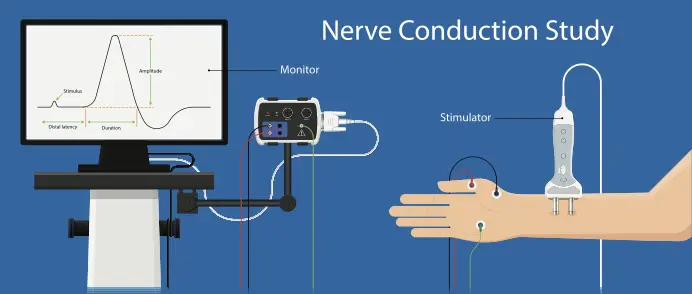
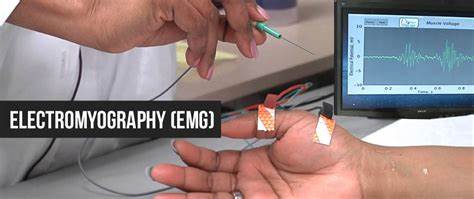
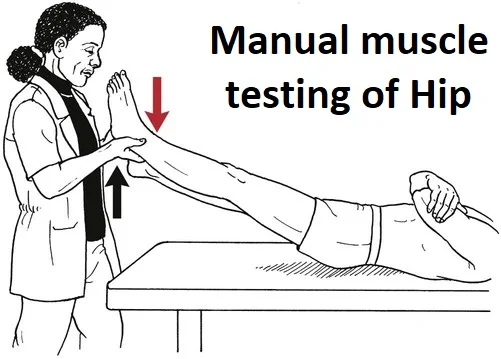
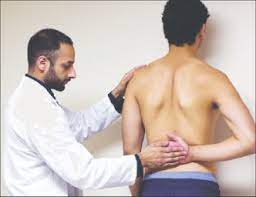
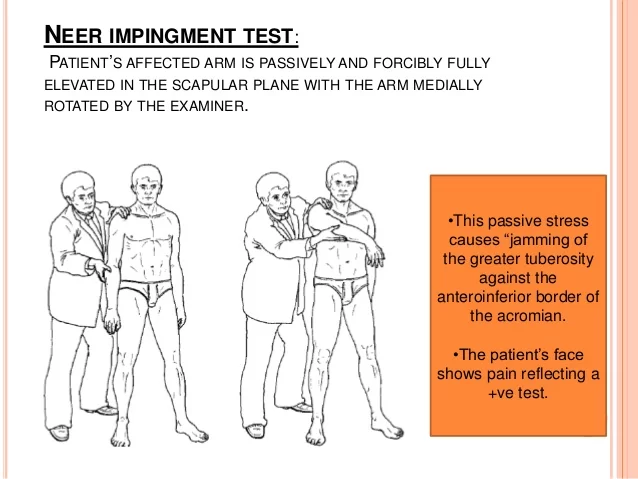

One Comment